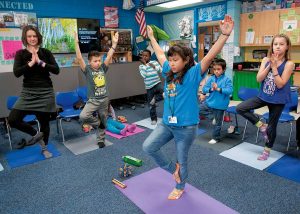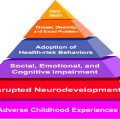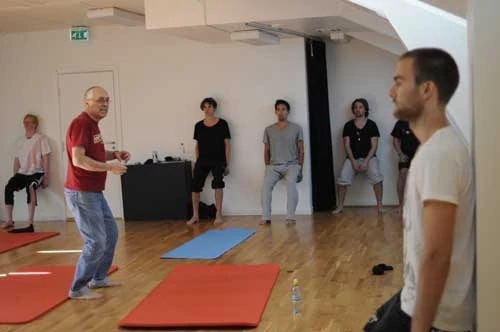Just yesterday, my granddaughter Anna came to me and said, “Let’s go for a bike ride.” While this is an activity that she always enjoys for its own sake, I could see that the suggestion was coming from a place of stress. Some bullying had been happening in her learning pod, and she was recognizing her need for release.
This is something we’ve striven to teach her – how to identify her feelings, body cues, and options of releasing or soothing activities. It’s great to see when she takes the initiative for herself.
As we rode our bikes around our neighborhood, I found myself thinking about the ways in which our schools have been responding to the added stress and trauma of the pandemic. The pressures of the past year have truly brought about a crisis in children’s mental health. As remote learning gives way to hybrid learning and the return of in-person education, the need to give students tools for dealing with their feelings becomes more important than ever.
In fact, I think it’s one of the most powerful strategies we have for helping them get back on track academically while simultaneously supporting their social/emotional development and health.
Stress Is in the Body, Too
Unfortunately, the typical school response to stress and trauma is cognitively focused. There’s lots of thinking but not much moving.
buy aceon generic andnewbloonline.com/aceon.html over the counter
The body containing stress and trauma goes missing. Head-based lectures and activities dominate – something that kids, especially teens, already get way too much of.
Why they do this is understandable. Such programs can seem cheaper and easier to implement than an integrated, body-based program. Clearly, schools are doing their best they can with the limited resources they have.
And now they have an opportunity to do better.

Kids need to move to help them release stress, as well as to connect with their changing bodies and to feel a sense of control and self-efficacy. Whether teachers and parents recognize this or not, children – and people in general – are always giving us cues as to what their nervous system needs. It’s just that schools today often don’t know how to teach social/emotional education that’s experiential and includes the body, as well as the mind.
Movement Is the Medicine
Movement is what helps us regulate in times of stress. A stressed body contracts in self-defense, as a form of protection. Physical release restores balance – fidgeting when nervous, trembling when scared, “shaking out” your head and limbs once a threat has passed.
Imagine a dog that’s cowering in response to fireworks. Does lecturing the dog about stress help at all? Even if the pup could understand what we were saying, it still typically needs to be held or allowed to move. The dog’s trembling is its body’s intelligence telling us that it needs to move to release the nervous system’s charge.
Without release, tension remains stored in the body. This is how trauma persists – and why tools like TRE (Tension/Trauma Releasing Exercises) can be so powerful for dealing with trauma, PTSD, and chronic stress. It offers a safe, controlled way to regulate and return to calm.
Yoga offers a similar opportunity – one that is in many ways safer than the typical cognitive approaches to working with stress and trauma. As we’ve noted before,
brain stem-related activities that emphasize patterned, repetitive, rhythmic somatosensory activities like yoga, singing, drumming, running, help to regulate the nervous system and make the brain more accessible to relational (limbic brain) reward and cortical thinking.
Occupational therapists, too, have similarly been using balance activities and “heavy work“, that emphasizes physical effort, to provide vestibular and proprioceptive input . That’s because these systems help to calm our bodies and feel more oriented (more safe) in space.
buy Alphagan generic andnewbloonline.com over the counter

Even better, weaving times of movement and times of calming throughout the day actually mitigates the need for “interventions” later. This is why we make time each day for Anna to engage in some fun movement – movement that also gives all of us the same outlet, as well as needed physical exercise.
Valuing physical movement as much as cognitive activity is an absolutely necessary ingredient for any human being’s health and wellness.





